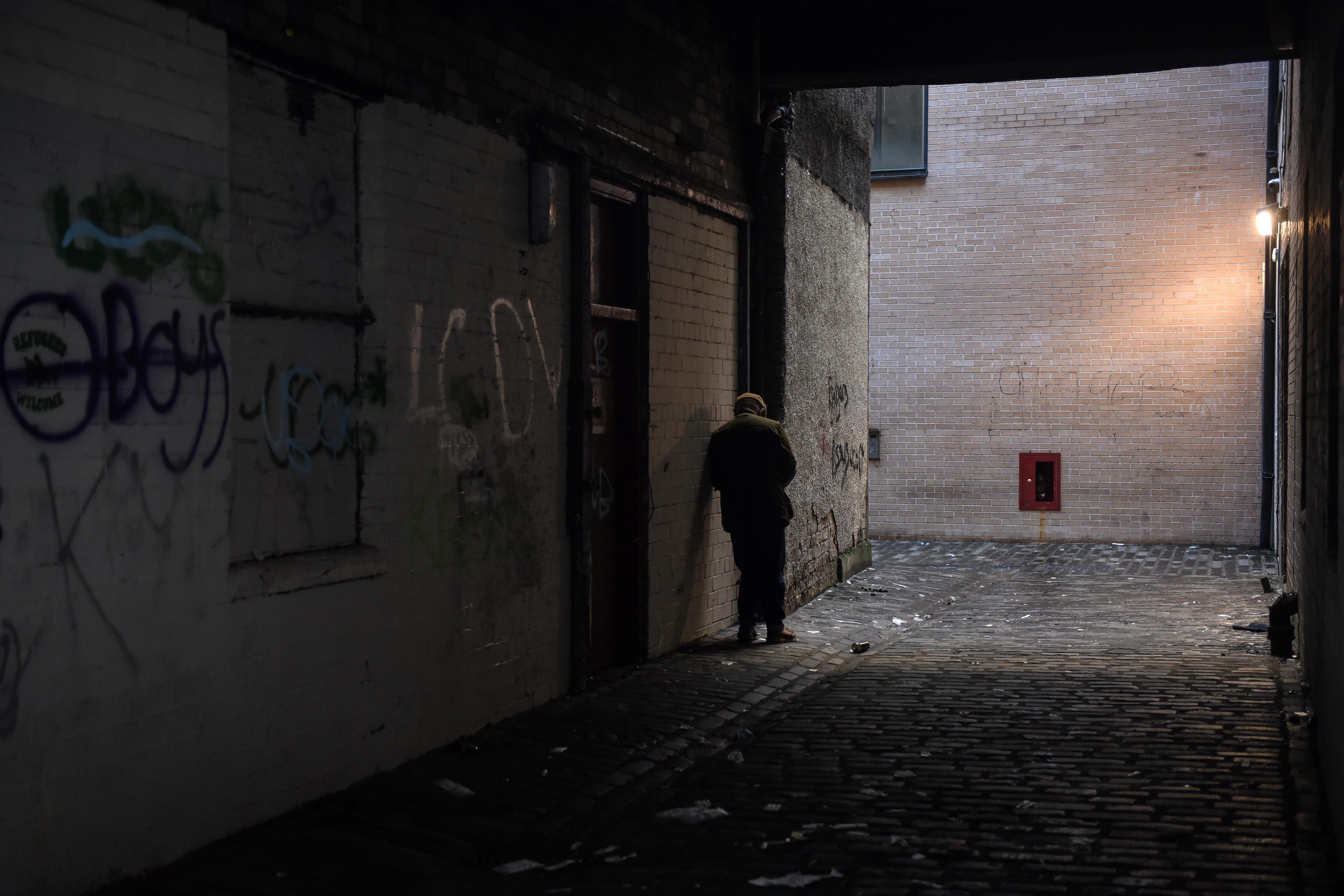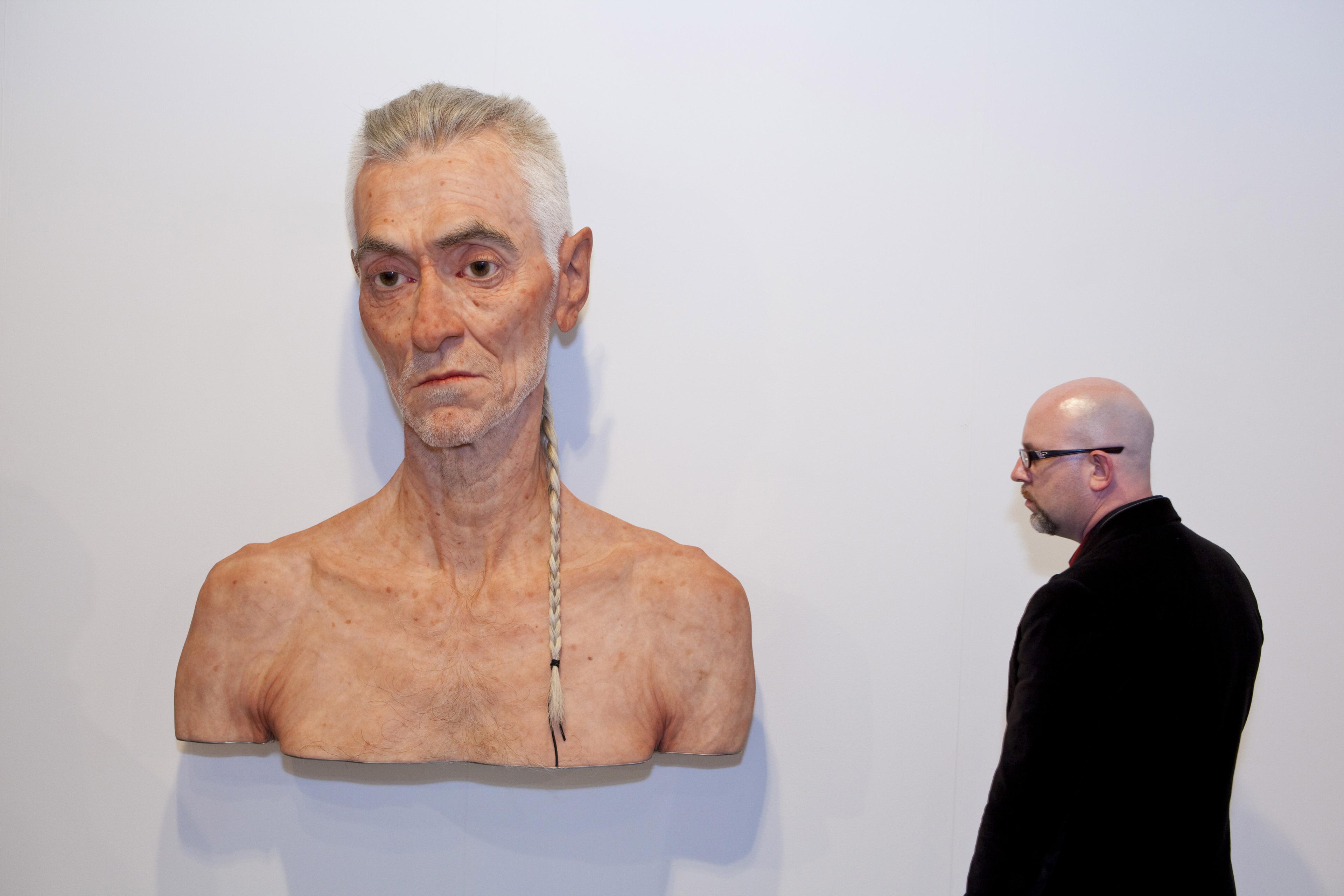Anxiety had dogged 37-year-old Sara for as long as she could remember, scuppering her attempts to connect with others. As her therapists recalled in a case study, Sara was terrified that anyone she approached would judge her, which would make her go beet-red with shame. ‘I either go completely blank and cannot think of anything to say,’ she explained, ‘or I… end up discarding it, because I think it sounds stupid, and I am afraid that I will blush.’
When she had to brave social encounters, Sara went to extreme lengths to hide her blushing. She hunched forward so her hair curtained her face and wore funnel-necked blouses that rose to her chin. She refused to wear earrings, because she imagined her face was inflamed enough to make her ears swell.
As her fears bled excitement from her life – she couldn’t even enjoy choir practice – Sara reached out in desperation to the anxiety clinic at Aarhus University in Denmark. Specialists there advised her to try a week-long course of intensive cognitive behavioural therapy (CBT). Though it wasn’t an inpatient programme, each day would be a full-on sprint, involving hours of thought-shifting and behavioural-change exercises. Sara took the plunge and signed up.
Its promises might have a carnival-barker ring – Banish your lifelong anxiety in days! – but intensive CBT is no quack cure. Studies show that it often works as well as standard CBT to treat anxiety-related conditions, including obsessive-compulsive disorder (OCD), phobias, panic disorder and post-traumatic stress disorder (PTSD), and it achieves results more quickly than weekly sessions. It’s a blunt-force instrument, with all the hard-hitting impact that implies, and therapists must screen clients carefully to avoid inflicting trauma. It’s also not for depressed people or those seeking Freudian excavations of their past. Yet like most blunt instruments, intensive CBT has a clear utilitarian appeal. What’s a few days of behavioural boot camp if it means grinding decades-old fears to dust?
‘People come into this kind of therapy because they’re not able to go about things that matter,’ says Eileen Stech, a clinical psychologist at the University of New South Wales in Australia. ‘It might be about being able to take a child to the movies, being able to drive, being able to exercise.’ Stech, who practises intensive CBT with her clients, tells me: ‘We want people to have the quickest recovery and return to what matters most.’
Like much of modern psychotherapy, intensive CBT is rooted in the late-20th-century backlash against Freudian analysis. Albert Ellis, one of cognitive therapy’s pioneers, derided the old talking cure as a ‘cop-out’ that involved awaiting ‘magic-bullet insights’ for years on end. Along with others such as Aaron Beck, Ellis proposed a new approach – teaching clients to confront their irrational thoughts and replace them with rational responses to nip destructive behaviours in the bud.
In its focus on mental and behavioural restructuring, CBT harkened back in some ways to Pavlovian experiments of the early 1900s. A key element of CBT for anxious clients is exposure therapy, which is based on the principle of ‘expectancy violation’: subjecting people to frightening situations in controlled doses so they become more comfortable with them.
In recent years, the more intensive CBT approach has attracted research interest thanks to its potential to reverse anxiety-related symptoms within a week. Psychologists at the University of Oxford developed an intensive CBT programme for PTSD and designed a study to see how it stacked up to normal CBT. In the study, intensive CBT involved up to 18 total hours of treatment over five to seven days, while standard CBT involved three months of one-hour weekly sessions. Intensive CBT improved these clients’ PTSD symptoms as much as normal CBT and far better than a non-CBT treatment or no therapy at all.
The approach has worked similarly well for a spectrum of other anxiety disorders. In a Norwegian trial of four-day intensive CBT treatment for OCD, more than 90 per cent of participants showed significant symptom improvement, and more than 80 per cent were still doing well a year after the therapy. In a meta-analysis of intensive CBT for anxiety disorders in children, the treatment relieved symptoms as well or better than weekly CBT – and these improvements lasted for at least a year. A different study, at Virginia Tech, showed that, after just one three-hour intensive therapy session, children with specific phobias (for example, of spiders) saw their symptom severity drop by about half. Speedy CBT can also work in virtual space: Stech recently reported that a small group of people who did online intensive CBT for panic disorder or agoraphobia enjoyed substantial symptom relief.
Intensive CBT for anxiety disorders is heavy on controlled exposures that therapists introduce in a graduated, stepwise manner. If someone has a fear of exercise, say – common in panic disorder clients hyper-attuned to bodily sensations – ‘we’d look at first maybe doing a five-minute walk to perhaps laps around their house,’ Stech says. Once those laps feel comfortable, she says, ‘we’d get them to go further from the house into more remote locations, and then ask them to wear heavy or warm clothing so they experience more physical sensations while exercising.’
Those with PTSD carry out their own bespoke exposure sequences. They might seek out places or stimuli they’ve been avoiding, such as fireworks displays that evoke memories of being caught in a bombing raid. Or they might perform a kind of thought-based exposure in which they purposely recall traumatic situations rather than pushing them away. When patients learn to confront trauma head-on for sustained periods, it’s often easier for them to think about the trauma as ‘a specific occurrence rather than as a representation of a dangerous world and of an incompetent self,’ write the therapists Barbara Olasov Rothbaum and Ann Schwartz. Intensive CBT clients with OCD also do thought-based exposure exercises, such as conjuring triggering thoughts (‘I probably left that door unlocked’), accepting them, and adapting to them rather than compulsively checking the door.
Part of what makes intensive CBT so effective so quickly is the scalability of the exposure approach. Global mindset changes – such as those needed to overcome an existential crisis – generally take longer to sink in, Stech says, which means that intensive CBT isn’t as good a match for conditions such as depression. But with exposure therapy, she explains, ‘the more frequently we practise it, the more that change integrates into people’s lives.’ That means that, in extended CBT sessions, clients’ progress often mounts rapidly as they adapt to higher and higher levels of discomfort.
When clients perform many exposures over an hours-long period, they also don’t have to psych themselves up for more than a dozen separate therapy appointments. ‘That therapeutic momentum is one of the big benefits,’ Stech says. ‘Once you’ve got that energy and that motivation – and when you’ve seen the win from the previous exposure – that can give you confidence for the next one.’
In line with her therapist’s stepwise treatment plan, Sara’s intensive CBT exposures started out small. Her first assignment was simply to sit in the group therapy session along with other programme participants, getting used to the feeling of others’ eyes on her. But, just as Sara had expected, even this initial exposure made her anxiety spike. She kept thinking ‘I am turning red in my face’ and ‘The others will think I am weird.’ She finished her first day of treatment feeling angry and demoralised. She was just as fearful as before, because she was marinating in the situation she dreaded most.
Exposure therapy can be a potent vehicle for change, but it’s almost always a bumpy ride, and all the more so when that ride is a hurtling express. Prudent client selection is paramount: not everyone is ready for the kind of extreme mental retraining built into intensive CBT, and even those who are will agree that the boot-camp moniker is justified.
Tania Diaz, a clinical psychologist at Albizu University in Miami who counsels clients with difficult histories, points out that bombarding some people with a fearful stimulus might backfire. ‘In the case of complex trauma, you might exacerbate pre-existing symptoms and re-traumatise the client,’ she says. Intensive exposure therapy’s flooding approach can also feel overwhelming on a biological level. When fear grips people full-force, Diaz points out, the instinct-driven amygdala overrides other brain regions that control conscious thought. ‘The prefrontal cortex that’s responsible for organisation, thought and planning pretty much goes offline,’ she says. This can make focusing on exposure tasks an uphill battle.
Intensive CBT’s emergence might deepen the existing schism between proponents of CBT and psychodynamic therapists who hew to a more contemplative, Freudian approach. As Jonathan Shedler, a psychodynamic therapist and CBT critic based in California and Colorado, Tweeted this spring: ‘There was a time when most everyone understood psychotherapy as a process of enquiry, understanding and insight. Now we have psychologists and psychiatrists who can’t even conceive of therapy as something with any purpose other than treating DSM symptoms.’ Intensive CBT takes everything that people like Shedler detest about regular CBT – the quick-fix credo, the emphasis on reducing symptoms rather than probing into the past – and boils it down to a treacly concentrate.
Still, one can’t accuse intensive CBT of pretending to be anything other than what it is. It’s unabashedly a transparent, nuts-and-bolts, behavioural approach – but it’s the only one with a track record of clearing symptoms within days. A long-haul plan just doesn’t cut it for many clients: up to half of PTSD patients don’t get much better in traditional therapy, and others drop out before finishing the recommended number of sessions, which hurts their chances of returning to normal life.
For anxiety-related disorders, ultra-short-term therapy is often a better option than prolonged treatment that allows destructive behaviours to solidify. ‘A short blast of intensive CBT may be helpful to get the ball rolling,’ says Alex Dimitriu, a psychiatrist in California who cautions that more sessions might eventually be needed to tune up the results. Intensive CBT can also be well-suited to client groups with specific care needs. Researchers at King’s College London are currently trialling an intensive CBT protocol for pregnant women with anxiety, who might be unable to take prescribed medication despite their acute symptoms.
Stech stresses that, for intensive CBT to produce the most convincing turnaround, patients need to understand what kind of mental marathon they’re in for – and to be willing to set work and family responsibilities aside for a few days. ‘This is a challenging therapy,’ she says. ‘They need to be ready, and have the time and space in their lives to do it.’
When Sara returned for her second day of intensive CBT treatment, she talked to others in her group about times she was afraid of blushing. One person commented: ‘I have a friend who is always blushing, and I have never thought of this as a problem. Actually, I think it is charming.’ For the first time, Sara started to question whether blushing really made her look bad. Was her intense fear the product of a faulty assumption?
Sara’s exposure exercises ratcheted up from there. Her therapists instructed her to sing a song for the group and to give a speech in French, not her first language. Then came the hardest task of all: talking to the group about her emotional struggles since childhood.
Despite Sara’s moments of knock-kneed terror, her commitment paid off in spades. Months after her intensive therapy, she reported that she attended parent meetings at her child’s school without panicking or worrying about blushing. She’d even started conversations with other parents who intimidated her, something she never imagined she’d do. ‘To blush is not the end of the world,’ she reflected. ‘I do not have to hide myself anymore.’








